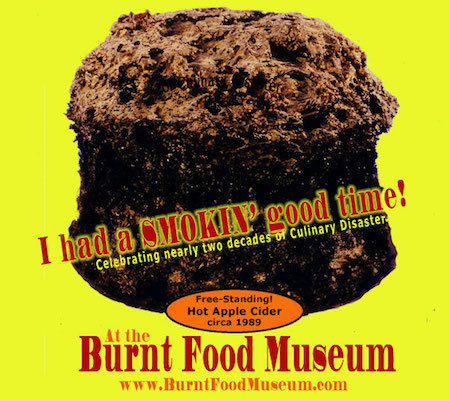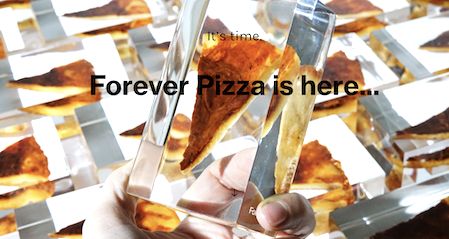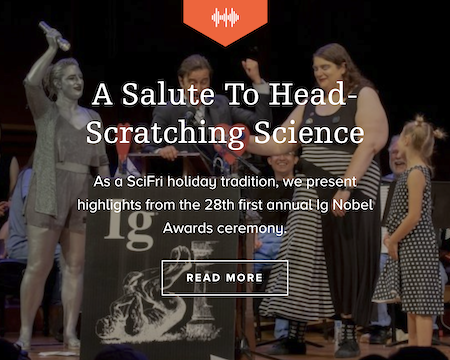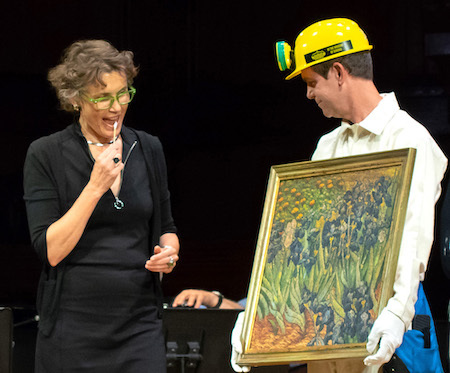Marc Abrahams's Blog, page 165
November 26, 2018
Wrinkled sheets, crumpled paper
New research about how paper crumples was done in the same chunk of Harvard that produced an Ig Nobel Prize-winning study about how sheets get wrinkled. It builds on—and adds new wrinkles to—that earlier research.
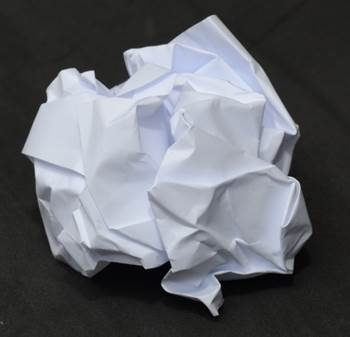
Siobhan Roberts reports, in the New York Times, about the paper-crumpling study:
This Is the Way the Paper Crumples
In a ball of paper, scientists discover a landscape of surprising mathematical order.
While working on his doctoral thesis at Harvard over the last few years, Omer Gottesman spent a lot of time at his desk crumpling sheets of paper, especially when he was stuck. He’d crumple a sheet, uncrumple it, stare into its depths, and think, “There must be something that would make all this mess look a little less messy.”
Crumple, uncrumple, crumple. Sheet after sheet landed in the recycling bin, each one blank but for its chaotically creased geography. In time, a semblance of order emerged.
Crumpled wads of paper are no doubt as old and commonplace as paper itself — “graves for failed theories,” Mr. Gottesman, a physicist, has called them. But for him, the crumpled paper itself was the research….
REFERENCE FOR THE PAPER-CRUMPLE RESEARCH: “A state variable for crumpled thin sheets,” Omer Gottesman, Jovana Andrejevic, Chris H. Rycroft, and Shmuel M. Rubinstein, Communications Physics, epub 2018.
The 2007 Ig Nobel Prize for physics was awarded to L. Mahadevan and Enrique Cerda Villablanca, for studying how sheets become wrinkled.
REFERENCES FOR THE SHEET-WRINKLE RESEARCH: “Wrinkling of an Elastic Sheet Under Tension,” E. Cerda, K. Ravi-Chandar, L. Mahadevan, Nature, vol. 419, October 10, 2002, pp. 579-80.
“Geometry and Physics of Wrinkling,” E. Cerda and L. Mahadevan, Physical Review Letters, fol. 90, no. 7, February 21, 2003, pp. 074302/1-4.
“Elements of Draping,” E. Cerda, L. Mahadevan and J. Passini, Proceedings of the National Academy of Sciences, vol. 101, no. 7, 2004, pp. 1806-10.
The new paper about paper wrinkles cites three research studies published by Cerda and Mahadevan.
BONUS FACT (somewhat related): At the Ig Nobel Prize ceremony, many, many paper airplanes fly. Quite a few of them are, or become, crumpled.

Research on burnt food: Where to go
If you want to understand burnt food—understand it better than most humans have managed to—this study by Nikolopoulos and Tzanetis is a good source of insight:
“TIME-ESTIMATES OF BURNT FOOD FOR A NONLOCAL REACTIVE-CONVECTIVE PROBLEM FROM THE FOOD INDUSTRY,” by C.V. Nikolopoulos and D.E. Tzanetis, Advances in Scattering and Biomedical Engineering, 2004, pp. 355-362.
For a less theoretical exploration, the place to go is (we remind you) The Museum of Burnt Food. Here’s part 2 of our now-historic report. And here is part 1.

Human Placentophagy – some Q.s and A.s
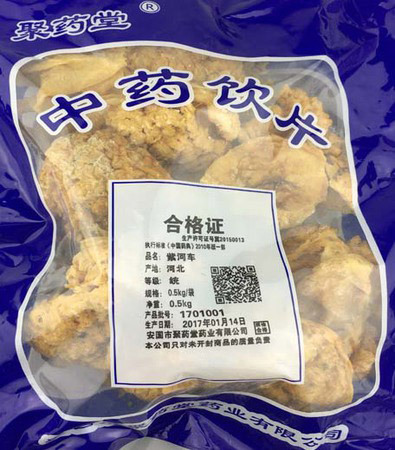 The existence of possible benefits or detriments brought about by eating human placentas (placentophagy) is hotly debated. Here are some topical viewpoints in the form of Questions and Answers
The existence of possible benefits or detriments brought about by eating human placentas (placentophagy) is hotly debated. Here are some topical viewpoints in the form of Questions and Answers
Q. Should human placenta-based products [see photo*] come with ‘use by / best before’ dates?
A. Yes, they should, says Emily Woodley (Cardiff Metropolitan University).
Q. What drinks could accompany a placenta meal?
A. Orange juice, recommends Dr Sara Wickham PhD, RM, MA, PGCert, BA(Hons).
Q. If you’re conducting placentophagy research with a placebo control group, what alternatives are there?
A. Beef, explains Laura Kathleen Gryder (University of Nevada)
Q. Does the mainstream medical establishment think human placentophagy is a good idea?
A. More research is needed – assert Alex Farr, M.D. Ph.D (Department of Obstetrics and Gynecology, Weill Cornell Medicine, New York) et al., bearing in mind that, as yet, no health benefits have been proven, whereas potential dangers have been.
* Note: The photo shows an example of 紫河车 (Purple River), a traditional Chinese Medicine remedy, which is available from Anguo City Jupharmacang Pharmaceutical Co., Ltd.
Coming soon : Who ‘owns’ a placenta?
Research research by Martin Gardiner

November 24, 2018
A new symbol for the concept of “starving artist”
This artist announces a plan to preserve pizza slices, entombing each slice in a transparent small block of plastic. It is or is not art, depending on how one chooses to define art. The pizza is or is not, over the long span of time, pizza, depending on how one chooses to define pizza. The artist is or is not an artist, depending on how one chooses to define artist.
Both the concept of “starving artist” and this particular artist are dependent on many things, a discussion of which may be beyond the scope of this blog post, depending on how we choose to define “beyond”
(Thanks to investigator Vaughn Tan for bringing it to our attention.)

November 22, 2018
Ig Nobel on Science Friday on the day after Thanksgiving
The 28th First Annual Ig Nobel Prize ceremony will be broadcast on the Science Friday program this Friday, November 23rd, 2018, in a specially-edited, recorded one-hour highlights version.
This continues the day-after-Thanksgiving tradition—now in its 27th year—for Science Friday’s special coverage of the ceremony. In most parts of the USA, it will be the first hour of the Science Friday radio broadcast. You can, alternatively, listen online. (Can’t wait? Listen to some of the broadcasts from previous years that are archived online.)
We always enjoy seeing/hearing how our friends at Science Friday manage to wrangle the complex Ig Nobel ceremony down into an entertaining, all-audio single radio hour.
The photo you see here is an action shot taken at this year’s Ig Nobel Prize ceremony. It shows part of the on-stage demonstration for the chemistry prize. Francesca Bewer is on the left, Eric Workman is on the right. The photo was taken by Howard Cannon.

Choices for Students : Food or Smartphones – Smartphones or Food? (new study)
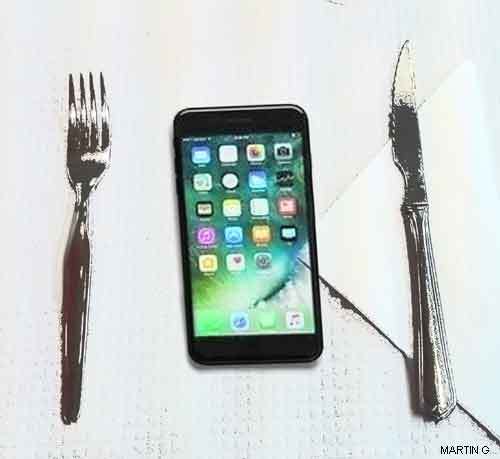 If students are placed in a situation where they are required to choose between either being deprived of food, or being deprived of their smartphone, which option will they be most likely to go for? A recent study from the Department of Pediatrics, University at Buffalo Jacobs School of Medicine and Biomedical Sciences, New York, has attempted, by experiment, to find out . . .
If students are placed in a situation where they are required to choose between either being deprived of food, or being deprived of their smartphone, which option will they be most likely to go for? A recent study from the Department of Pediatrics, University at Buffalo Jacobs School of Medicine and Biomedical Sciences, New York, has attempted, by experiment, to find out . . .
“The results of this study show for the first time that college students find smartphones reinforcing, and that smartphone use is more reinforcing than food. Food deprivation increases food reinforcement, and yet despite not having eaten for at least three hours, and not using a smartphone for two hours, individuals were still more motivated to work towards gaining portions of smartphone use than food, and were willing to spend a greater amount of hypothetical money on portions of smartphone use over food.“
See: ‘Smartphones are more reinforcing than food for students’ by Sara O’Donnell and Leonard H. Epstein, which is scheduled to appear in the journal Addictive Behaviors.
[ Research research by Martin Gardiner ]

November 21, 2018
Borborygmi and alternative-to-colonoscopy news
Nobel winner’s device listens to your gut
A non-invasive way for detecting gut disorders could replace the dreaded colonoscopy, West Australian researchers say
Gut disorders could be detected without the need for dreaded, invasive colonoscopies thanks to an invention by West Australian researchers, led by a Nobel Prize laureate.
A University of WA research team headed by Barry Marshall [pictured here] has invented an acoustic sensing belt that listens, records and analyses gut noises linked to gut disorders for faster and more effective diagnosis….
Gut rumbling sounds can be called by a technical name: borborygmi. There have been previous, very different attempts to discern meaning in those sounds.
BONUS: Here’s one person’s self-recorded intestinal rumblings:
REMINDER (distantly related): The 2018 Ig Nobel Prize for Medical Education was awarded to Akira Horiuchi, for the medical report “Colonoscopy in the Sitting Position: Lessons Learned From Self-Colonoscopy.” Here’s video of Dr. Horiuchi performing self-colonoscopy:

November 20, 2018
Ig Nobel on Science Friday on the day after Thanksgiving
The 28th First Annual Ig Nobel Prize ceremony will be broadcast on the Science Friday program this Friday, November 23rd, 2018, in a specially-edited, recorded one-hour version.
This continues the day-after-Thanksgiving tradition—now in its 27th year—for Science Friday’s special coverage of the ceremony. In most parts of the USA, it will be the first hour of the Science Friday radio broadcast. You can, alternatively, listen online. (Can’t wait? Listen to some of the broadcasts from previous years that are archived online.)
We always enjoy seeing/hearing how our friends at Science Friday manage to wrangle the complex Ig Nobel ceremony down into an entertaining, all-audio single radio hour.
The photo you see here is an action shot taken at this year’s Ig Nobel Prize ceremony. It shows part of the on-stage demonstration for the chemistry prize. Francesca Bewer is on the left, Eric Workman is on the right. The photo was taken by Howard Cannon.

Another cheese vibration experiment—this one with music
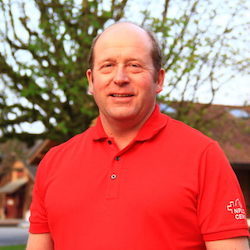 “Can music make cheese tastier? Swiss Emmental maker experiments” is the headline of an AFP report in the Japan Times. The main scientist doing the research is Dr. Beat Wampfler, a veterinarian [pictured here]. Here’s some detail:
“Can music make cheese tastier? Swiss Emmental maker experiments” is the headline of an AFP report in the Japan Times. The main scientist doing the research is Dr. Beat Wampfler, a veterinarian [pictured here]. Here’s some detail:
[A] Swiss cheese-maker has embarked on an experiment to test the impact of music on Emmental, one of the most famous cheeses in Switzerland….
In one corner of his impeccably clean cellar, nine open wooden crates sit with wheels of Emmental inside, and small music speakers directly below. Since September, the cheeses have been blasted with sonic masterpieces from the likes of rock gods Led Zeppelin to hip-hop legends A Tribe Called Quest. The project hopes to show that the power of music can influence the development, characteristics and even flavor of the cheese….
“At first we were skeptical,” admitted Michael Harenberg, the university’s music director. “Then we discovered there is a field called sonochemistry that looks at the influences of sound waves, the effect of sound on solid bodies.” …
Scientists have experimented with sonochemistry, in particular looking into how ultrasound can affect chemical reactions.
The news report does not mention whether this experiment consciously builds on the study that won the 2006 Ig Nobel Prize for chemistry. That prize was awarded to Antonio Mulet, José Javier Benedito and José Bon of the University of Valencia, Spain, and Carmen Rosselló of the University of Illes Balears, in Palma de Mallorca, Spain, for their study “Ultrasonic Velocity in Cheddar Cheese as Affected by Temperature.”
The study appeared in the Journal of Food Science, vol. 64, no. 6, 1999, pp. 1038-41.
(Thanks to Scott Langill for bringing this to our attention.)

November 19, 2018
A bra that falls off when you clap your hands (new patent)
Inventor (and IP / patent lawyer) Michael Mansour Ahmadshahi Ph.D., Esq. has just been granted a US patent for his ‘Signal-activated lingerie’ which incorporates a remotely activated (un)fastener “causing the lingerie to fall off from the wearer’s body” when it receives the appropriate signal. The patent document explains :
“Lingerie, such as bras which are worn by females, have a fastening mechanism, such as a hook-type fastener, which is difficult to open, especially for the male counterpart. A bra according to the present invention could be made using a signal-activated fastener such that the female’s boyfriend or husband could clap his hand and the bra would automatically open.”
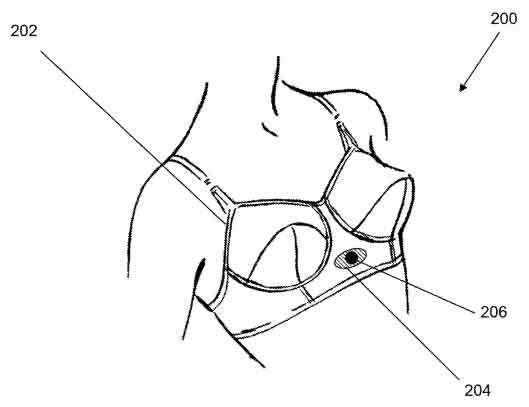 As described, the invention may also incorporate voice-recognition technology so that only a previously-authorized operator’s voice will activate it.
As described, the invention may also incorporate voice-recognition technology so that only a previously-authorized operator’s voice will activate it.
Notes:
[1] For those wondering whether the technology could/should also apply to male undergarments – the patent document doesn’t specifically mention them. But it does note that the invention can also be configured to remotely operate belts and trousers.
[2] According to the invention’s website, it’s soon to be launched as a product.
“We are a high-end lingerie company offering specially-designed one-piece lingerie. These lingerie DO NOT use biometrics.
We do, however, have a patented technology which uses biometric signals to unfasten the lingerie remotely. We hope to bring it to you soon! “
[3] The 2009 Ig Nobel Health Prize was awarded to Elena N. Bodnar, Raphael C. Lee, and Sandra Marijan of Chicago, Illinois, USA, for inventing a brassiere that, in an emergency, can be quickly converted into a pair of protective face masks, one for the brassiere wearer and one to be given to some needy bystander. See U.S. patent 7255627 for a “Garment Device Convertible to One or More Facemasks.”
[ Research research by Martin Gardiner ]

Marc Abrahams's Blog
- Marc Abrahams's profile
- 14 followers


